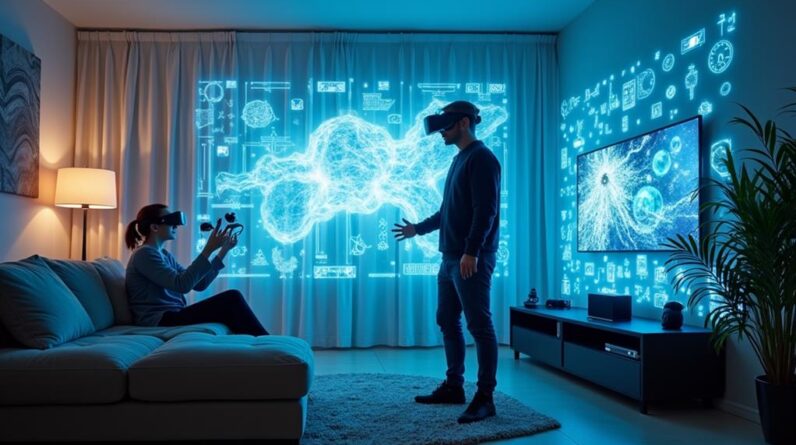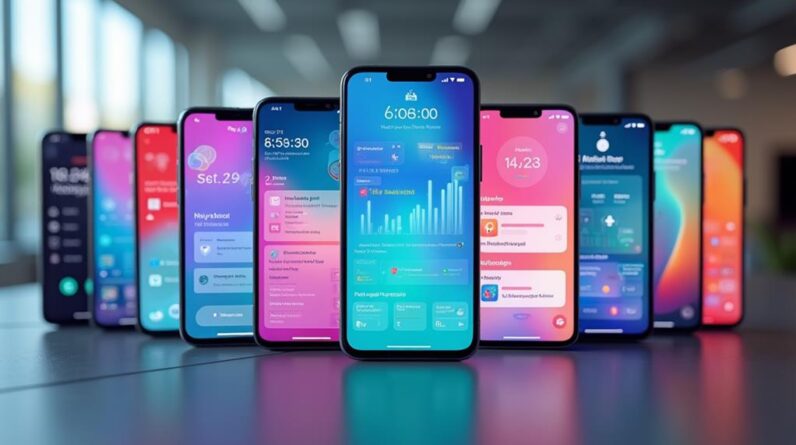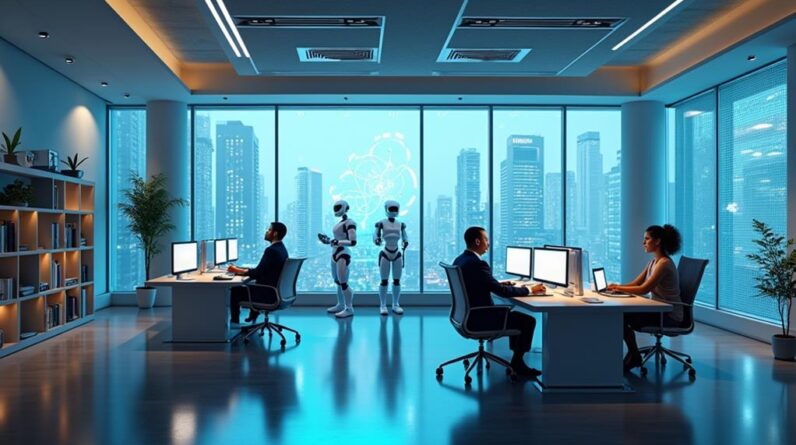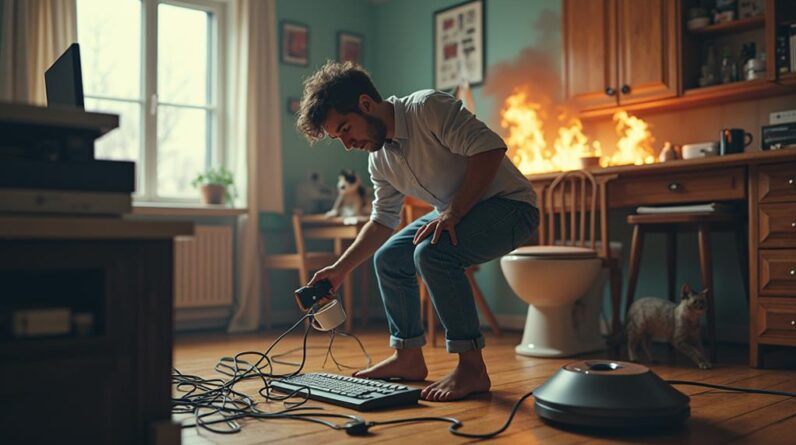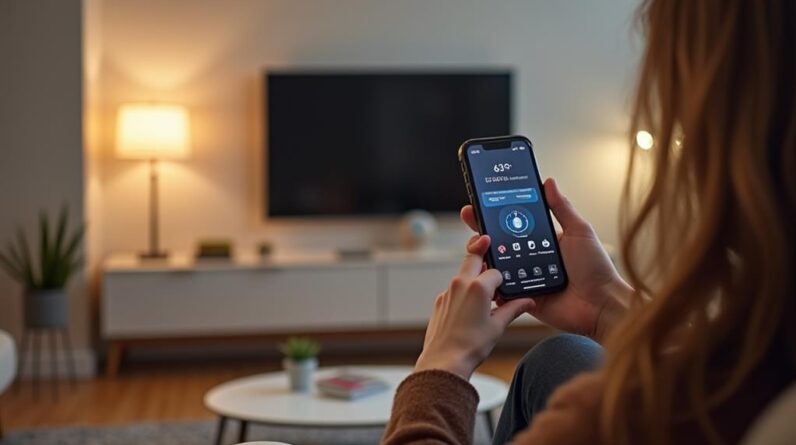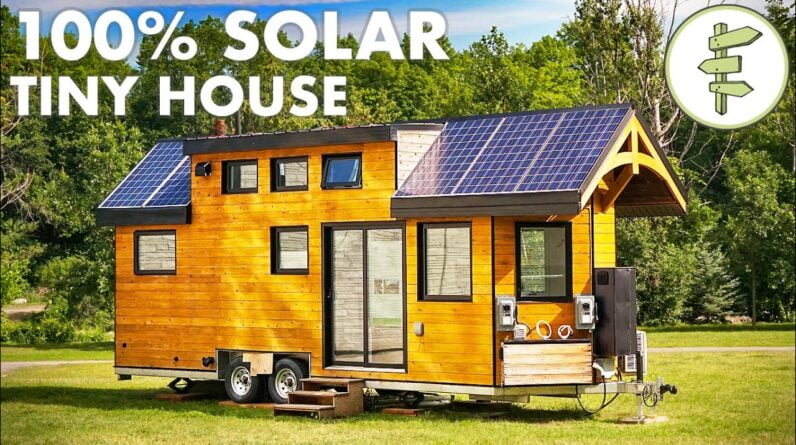
>>MAT: Hey everyone in this video, we're gonna give you a full tour of a super innovative Net Zero tiny house that's 100% solar-powered. It has a full roof made of integrated solar panels, an atmospheric water generator prototype. It's insulated with vacuum insulated panels. It has a home automated system, a sliding loft, and more. The Northern Nomad was designed by a group of students from Carleton University. In this video, we're going to meet up with the professor and 4 of the students who worked on the project to get a full tour and find out more. [Music Playing] >>SCOTT: So this is the joy of building something and seeing how it develops. So what I wanted to do was come up with an idea that instead of getting contractors, etc to build it for me. I thought, a nice thing to do would be to get students who are inspired to try to make a difference and build it themselves.
I think the major goal here is to start a conversation of what can be done in terms of pushing the limits in sustainability. [Music Playing] >>SEUNGYEON: This is a Net Zero energy tiny home on a 24' x 8' trailer. Net Zero energy means: this building only uses as much energy as it generates over a one-year period. So the power comes from the sun, gets stored in the battery banks but at times we generate more power than we use. So in those cases, we sell it to the grid and in other cases where we produce less, then we buy from the grid. But overall, when you sum it all, it's Net Zero. So I'll take you on a little tour. I am standing in front of this raised platform which is the kitchen. The reason it's raised is because underneath it, we have 900 litres of fresh water storage. So that made our kitchen go up a little bit and we had to figure out where to put the loft bed. So we thought, we should probably put it on the other side but then you would have this low ceiling all the time.
So why don't we make it movable. We installed rails so it can move the loft back and forth. When you're sleeping, you could sleep over there where you have more than 3 feet headroom and you have more windows there. This is the living room area. We have it lined with some furniture that we had an industrial designer design for us. Turns into a dinner table. Same thing happens on the other side. The idea is to have up to 6 people sit around and have dinner together. It's also a storage space that you can access like this. Over here, the bench is actually our mechanical room. So it hides all of our electrical as well as our battery bank. For additional storage, we turned this step into storage space. Over here is the energy recovery ventilator. It recovers heat in the process of exchanging stale air to fresh air and also it retains moisture. Over there, if you look on the other side is our heat pump unit.
So it supplies cooling in the summer and supplies heating in the winter. One important aspect about this house is we're 100% electric. So all the power comes from solar panels and we have battery banks, but we have no combustive or resistive heating. This is the bathroom. We've got a little vanity over here. We've got a composting toilet. So we did not have to deal with blackwater at all. That was important for a mobile tiny home. For weight reduction and being able to withstand all the vibration instead of using glass, we used eco resin. This is a resin panel. It's flexible and it doesn't break. >>JOSH: We have 3.6 kilowatts of solar generation power on the roof.
That's a unique system that's called building integrated photovoltaics. So the panels actually are the roof. A lot of times when you would look at a solar array outside you would see lots of spaces between the panels, but we actually put the panels really tight together so that we can have a seamless surface for the roof. So it actually blocks all the water and everything and that comes into the house, down the wall here, and ties into these electrical panels that we have.
That system is pretty unique because we can also tie into the regular electric grid or what's called shore power. So the system over here is a little bit more complicated than a normal house. When you look at the panels, you can switch from solar to grid and then the rest of the house sort of runs out of there and powers everything. Under here, we have the batteries. We have 22 kilowatt hours which is roughly enough to run the house for a couple of days without any external energy. One of the challenges with solar is that lots of times the sun is shining and you don't need the energy and when the sun is not shining you do. So it's a little bit of a seasonal problem and that's why we decided to include the ability to hook into the electrical grid and sell power back. So another thing you can do if there's a lot of energy coming in because it's a bright sunny day is actually power your electric vehicle. We have an electric vehicle charger. The whole house actually runs off electricity. There's no gas appliances or wood-burning stove or anything like that.
So it's all powered by sunlight. One of the features we originally looked at during the design phase was rainwater collection. But we decided against it for a few reasons and went with the atmospheric water generation. And the reason we shied away from rainwater collection is because it's intermittent. You only get water when it's raining. But with the atmospheric water generator, as long as there's humidity in the air, you have the potential to pull that out and produce water. Over there, in that corner of the house, you can see an orange sort of wall and what that is is waterproofed wall membrane. Because that's where we do our water generation from. What happens, if it's really humid inside or potentially outside, you can open up that cabinet in different ways and bring in an air supply and then run the dehumidifier, which you can see. Right now, it's not tied into the storage we have underneath but there is a tap where you could connect that. We actually have the ability to potentially depending on weather generate up to 28 litres of water a day.
Underneath the kitchen floor, we have 900 litres of water storage tanks. So again, if it's a bright sunny day and your batteries are full, you can start to save up some water from the high humidity environment that's going on. [Music Playing] >>CHRIS: It's a 2×4 stud structure and between the studs, we have a closed cell spray foam and then on the outside of the sheathing of the building we have vacuum insulated panels.
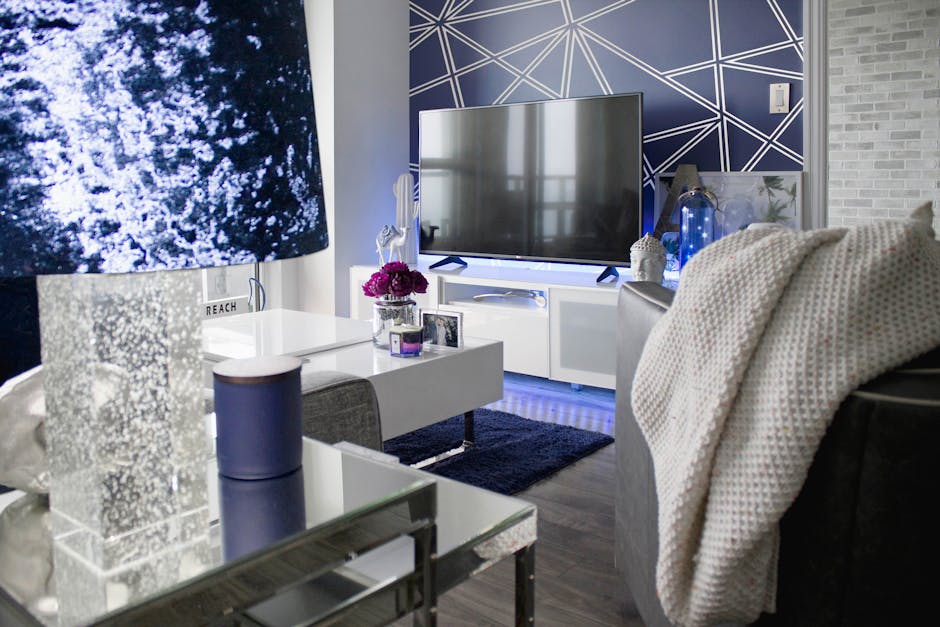
These are used in refrigerators and freezers and they have an R-value much, much higher than typical insulation in houses. We sandwiched them between layers of rigid foam insulation to help protect them and add more insulation. A vacuum insulated panel is fumed silica core and then it's encased in this aluminum foil, and then it's evacuated completely. So it's a very rigid vacuum. They perform exceptionally well. They're very delicate. So that's a challenge of installing them in houses is how do you make sure that nobody puts a screw or a nail through it? A huge reason for using vacuum insulated panels in the tiny house is because it allows us to build very thin walls with only this maximum allowed width of roughly 8 feet.
We didn't want to have 2×6 walls so we went with 2×4 walls, and we're able to use vacuum insulated panels and the insulation value of these walls is much higher than a typical house. This tiny house is a research project. So we want to monitor the performance of it year-round. So we have sensors all throughout the building envelope and in some of the HVAC systems. We have temperature and moisture sensors in the walls, floor and roof that are telling us what's happening in the building envelope. We also have sensors measuring solar radiation. We have a wind driven rain gauge so that measures how much rain is carried by the wind into the side of the building and that's a very large factor in carrying moisture into the building.
So we want to know about that. >>DAVE: A digital twin is essentially a digital copy of a structure, it can be any structure, and what it allows us to do is kind of figure out where conflicts are before they happen during construction. So if we make all the mistakes before we build the building then we can sort of streamline the system and how things work together. Essentially our digital twin shows the entire structure of the building.
We can highlight different elements. So if we wanted to take a look at solar panels, we can highlight the solar panels. It also allows us to see how all of our systems integrate together. The digital twin acts as a window into the walls and into the structure of the building. So we can make transparent certain layers of our digital model and in doing so we can actually look at all the systems and how they play together as a general structure.
So if you look into here, we can see the entire framing structure of our building. We can see the water collection tanks that are underneath the kitchen floor. We can see all of our plumbing, all of our electrical systems are all integrated into this. It also lets you during renovations see into the walls of the house and you can figure out where anything is integrated. If there's an electrical wire here that you don't want to cut you can find where it is before you go into the wall. So in engineering there are a lot of different disciplines that have to work together to make a building come together. You need air ducts, you need electrical systems, you need plumbing. And it all has to work in the envelope of the building out of sight of everybody involved but if you have everybody working separately then sometimes what can happen is the systems will conflict with each other.
The beauty of BIM and having a digital twin is that you can model everything beforehand. So if 2 pipes are intersecting, the modeling software will tell you that. So you can avoid any of these conflicts before they ever happen. >>SEUNGYEON: We have equipped this tiny home with a home automation system and voice assistance. The idea behind this was to automate thermal controls so that when a person is living in this house he/her behaviour on how to use this building impacts greatly how much energy gets consumed inside this building and by using automation technologies we're able to cut down power consumption where it is not absolutely necessary.
For example, if the AC is running and there's one window that's cracked open a little bit it can tell you: "window is open, you should close that." It's a simple example. [Music Playing] >>MAT: We were really impressed with this tiny house design and the innovative ideas that they incorporated in the build. The team of students who worked on that tiny house actually just started a fundraiser to build the Northern Nomad version II – and with that new tiny house they plan to research micro grids and renewable energy swapping. So if you want to help them out, I'll put the link to that in the description below. Please share this video if you liked it, be sure to subscribe and thanks for watching!.
As an Amazon Associate I earn from qualifying purchases.



